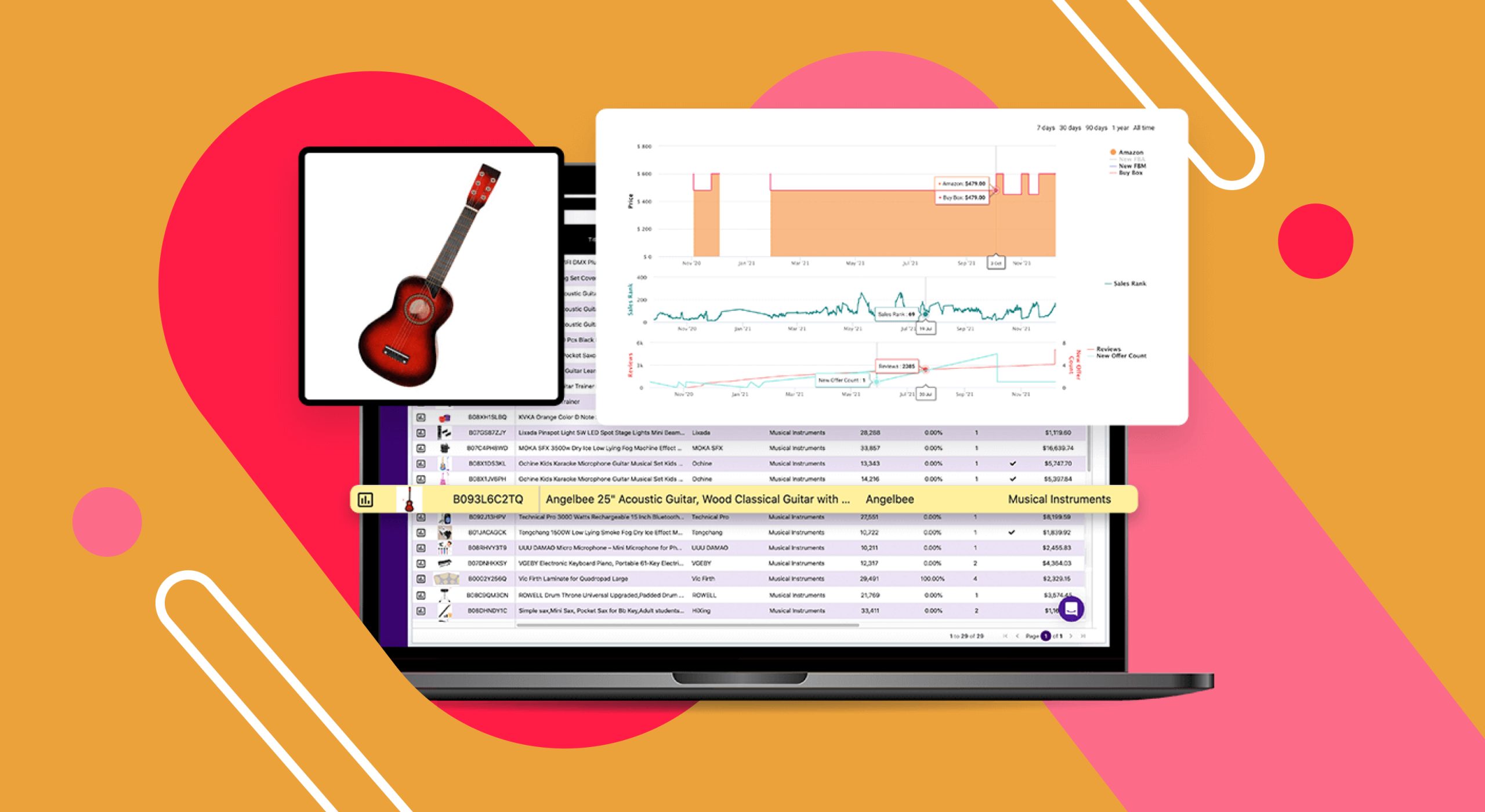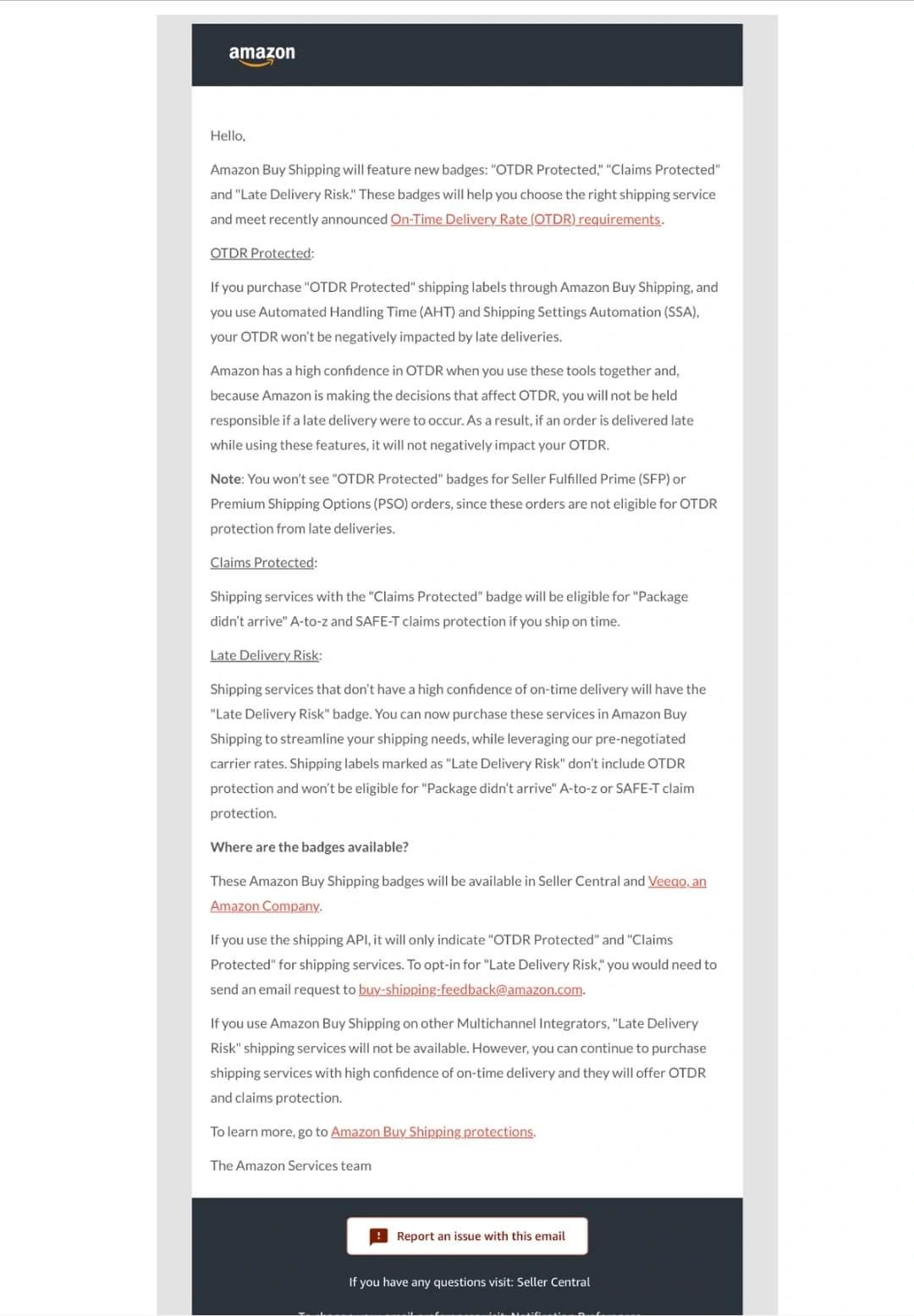When was the last time you reviewed your logistics model for major improvements? Was it last Prime Day? Last year? A long time ago?
Ideally, you should make logistical improvements the moment you notice some inefficiencies in your deliveries. But because not everyone has the time or resources, we did our best to help—by sharing what’s new in the ecommerce logistics space.
- Multi-carrier shipping 🚚
- A stress-free product research solution 🖱️
- Updates to Amazon’s On-Time Delivery Rate requirements ⏳
PS: Make sure you check out the sizzling bit we added today about Amazon’s new delivery-related badges.

SIZZLER OF THE WEEK

BIG IDEA
Getting deliveries right is crucial for keeping customers happy. And FYI, 72% of shoppers now expect that they can choose their delivery options.
That's where multi-carrier shipping comes in. Unlike with just one carrier, this logistics scheme lets customers pick what works best for their package. Manufacturing & Logistics IT stated that offering delivery options at checkout can boost conversions by up to 20%!
📍 The catch
Offering multi-carrier shipping isn’t always straightforward, especially in online marketplaces. Plus, there’s a lack of control over shipping options, which can complicate the process of integrating multiple carriers.
Yes, it’s a bit complicated—but not impossible. Here are 3 ways to transform your shipping model:
- Use technology to offer built-in multi-carrier deliveries. New solutions make it easy to incorporate delivery management seamlessly via APIs. They allow you to offer delivery options without making super-big investments or introducing complex processes to customers.
- Convert your deliveries into revenue drivers. APIs not only streamline operations but can also boost revenue. By negotiating volume agreements with carriers, you can earn extra income for each package shipped. When you handle thousands of parcels, these extra earnings can quickly add up.
- Hire specialists, especially if you're not familiar with these tech-y details. They have the knowledge and tools to seamlessly integrate delivery options into your platform, simplifying things for you. Combining this with the right delivery API, you can quickly access advanced delivery features without heavy lifting on your end.
🚪 From checkout to doorstep
In ecommerce, staying ahead means embracing the latest innovations. Multi-carrier shipping isn’t just a trend—it's crucial to delivering exceptional customer experiences, such as:
- Options at checkout. Some customers prioritize cost, while others value speed. Either way, it's best to provide options that can accommodate diverse preferences.
- Relevant communication. Customers appreciate updates and keeping them informed enhances the overall experience.
- Reliable delivery: Messing up a delivery can damage trust, so ensuring timely and accurate deliveries is key to maintaining customer satisfaction.
By integrating multi-carrier solutions, you can streamline your logistics, offer more flexible delivery options, and build stronger relationships with your customers. 🚚

TOGETHER WITH SMARTSCOUT
A stress-free product research solution to polish your sales strategy

Picture this: You're diving into a sea of data, but instead of feeling overwhelmed, you're exploring with ease. With SmartScout's Subcategories feature, you can have all the information you need, intuitively organized and right at your fingertips.
Step 1: Browse the categories and subcategories.
After selecting a category and subcategory, you’ll see in-depth data, including monthly revenue estimates, seller counts, average product prices, and exclusive insights.
Step 2: Choose what you want to research.
To delve deeper into a subcategory, you can use either of the following:
- Brand: Use this option to analyze subcategory-specific brand details, including estimated monthly revenue, percentage share, and average seller counts, ASINs, or units sold.
- Product: Use this option to explore a wide array of products within any subcategory. Access information such as monthly revenue, rank, number of FBA sellers, Buy Box price, review rating, and more for each product.
- Subcategory: Use this option to focus on a single subcategory or open several, each in its tab, and switch between them.
Step 3: Filter as much as you want!
Every brand, product, and subcategory table has columns with powerful filters. Just set your target parameters, and SmartScout adjusts instantly. Here are some filter ideas to get you started:
- Monthly revenue estimate: Adjust this according to the size of your target brand.
- Average number of FBA sellers: Use this to find products with lower competition.
- Average selling price: Use this to strategize your pricing, product selection, and competitive positioning.
- Brand/product score: Know which brand or product offers extensive content on their product pages.
We’re making it even better for you!
SmartScout has partnered with SellerBites to give you a 25% DISCOUNT for the FIRST THREE MONTHS. See how you can use their services to your advantage.
Click on the link below to claim your 25% discount!
Make my product research easier

BITES OF THE WEEK
- Record Speed: Amazon is breaking speed records (not traffic laws) with 5 billion deliveries!
- Logistics 2024: Here are 4 emerging trends reshaping logistics.
- Rural Mode: Amazon aims to bring better delivery services to remote rural areas.
- Choosing Couriers: Do you know the things to consider when choosing a delivery service provider?

SELLER REFRESHER
What’s new with Amazon’s On-Time Delivery Rate requirements?

Do you ever wonder why Amazon’s expertise in delivering exceptional customer experience only gets better over time?
Well, here’s the answer: by consistently ramping up its delivery game! According to Veeqo, the retail giant is updating its On-Time Delivery Rate (OTDR) requirements to make sure customers get their orders on time.
💨 What’s changing?
- New OTDR threshold. Sellers must maintain a 90% or higher OTDR for seller-fulfilled orders. Falling below this could lead to restrictions on listing seller-fulfilled products. However, you can still list items through Amazon FBA.
- Recommended OTDR. For the best customer experience, Amazon recommends aiming for a 95% OTDR or better for all seller-fulfilled orders.
- Measurement shift. OTDR will now be calculated based on deliveries made by the original “Deliver by” date; extra days given for delays won’t be factored in. This means you'll need to hit your delivery deadlines without relying on those extra days.
- Previously, OTDR was calculated after considering any “promise extensions” (extra days added to delivery dates for things like weather or transportation delays).
📅 The changes will take effect on September 25, 2024. From then, sellers with the lowest OTDR performance will face restrictions.
So, make sure you're prepared to meet these new standards to avoid any hiccups.









